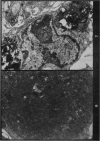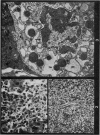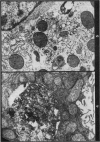Abstract
The livers of mice of different ages were readily damaged by Coxsackie virus B1 infection. The severity of liver damage decreased as the age of the mice increased. Coxsackie B1 viral crystals were not found in the damaged liver cells in spite of severe pathological changes of the liver, both histologically and electron microscopically, and even though characteristic crystal formation was observed in the pancreas of three of these same animals. Nevertheless, the hepatic damage was considered to be due to direct viral invasion of the hepatic cells. This injury was followed by a variety of degenerative and necrotic processes displaying somewhat characteristic morphological manifestations. The severe hepatic infection produced in the newborn mice resulted in their death from a rather fulminating illness, whereas in the older mice there was recovery from mild to moderate hepatic injury with cellular regeneration by the fourth day after viral inoculation. The experimental preparation used here provides an excellent means for the study of the processes of injury and healing of the liver infected with a virus that is also infectious for man.
Full text
PDF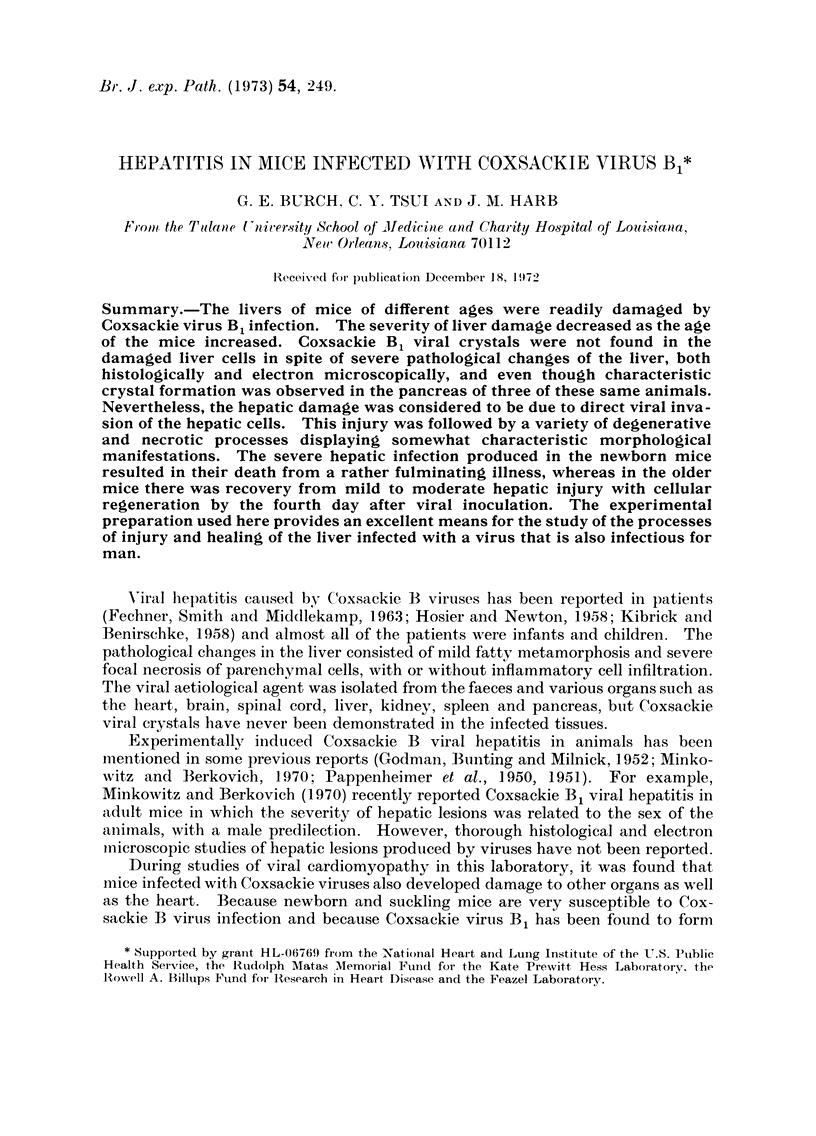

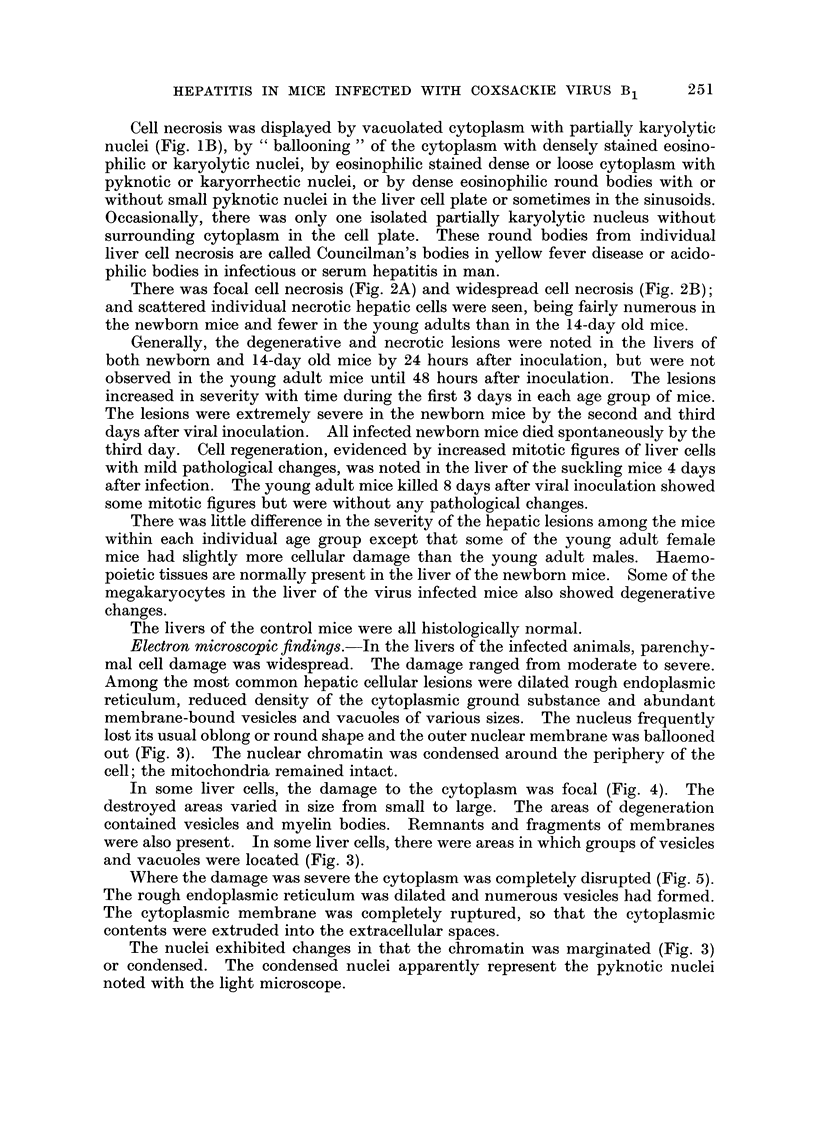
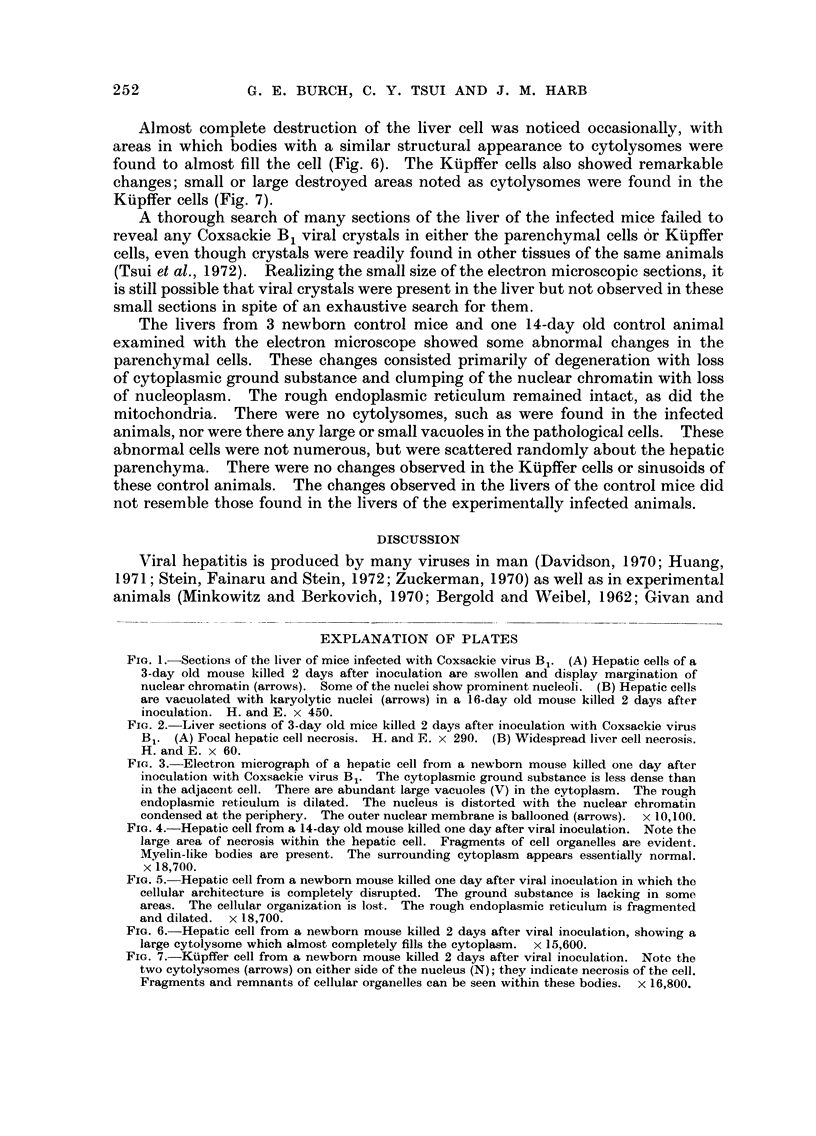
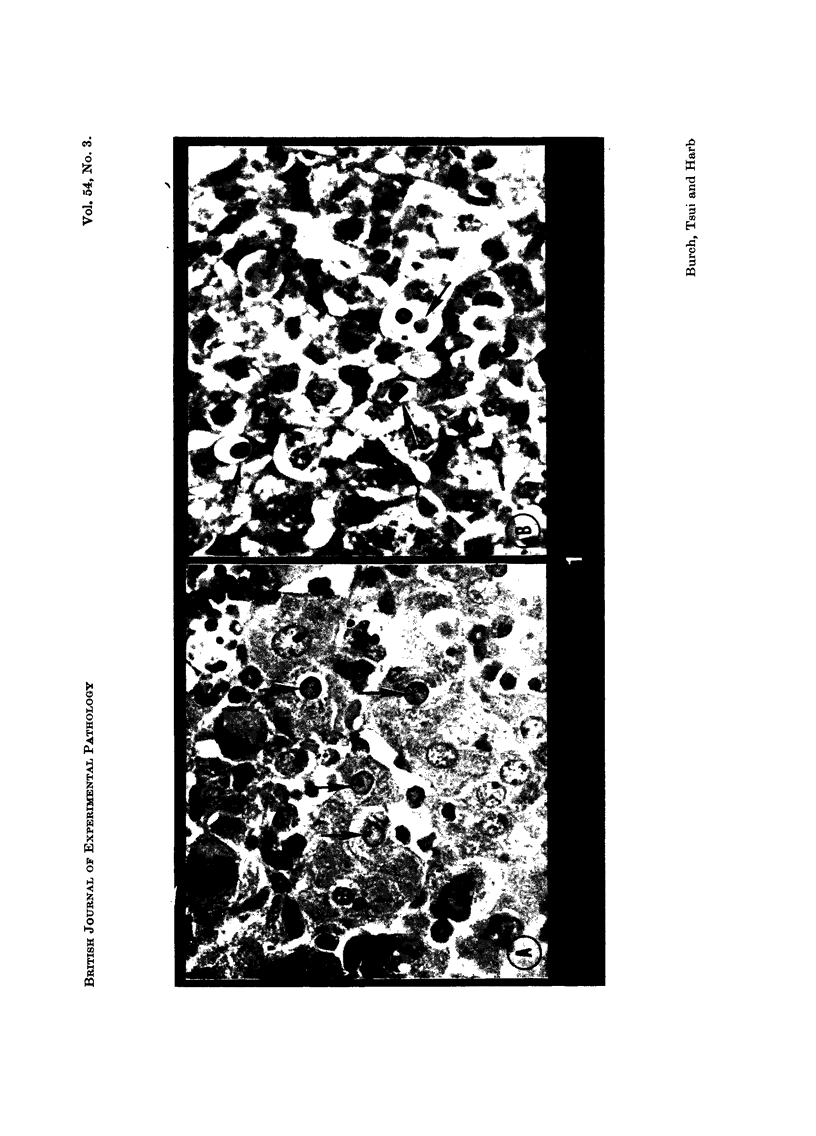

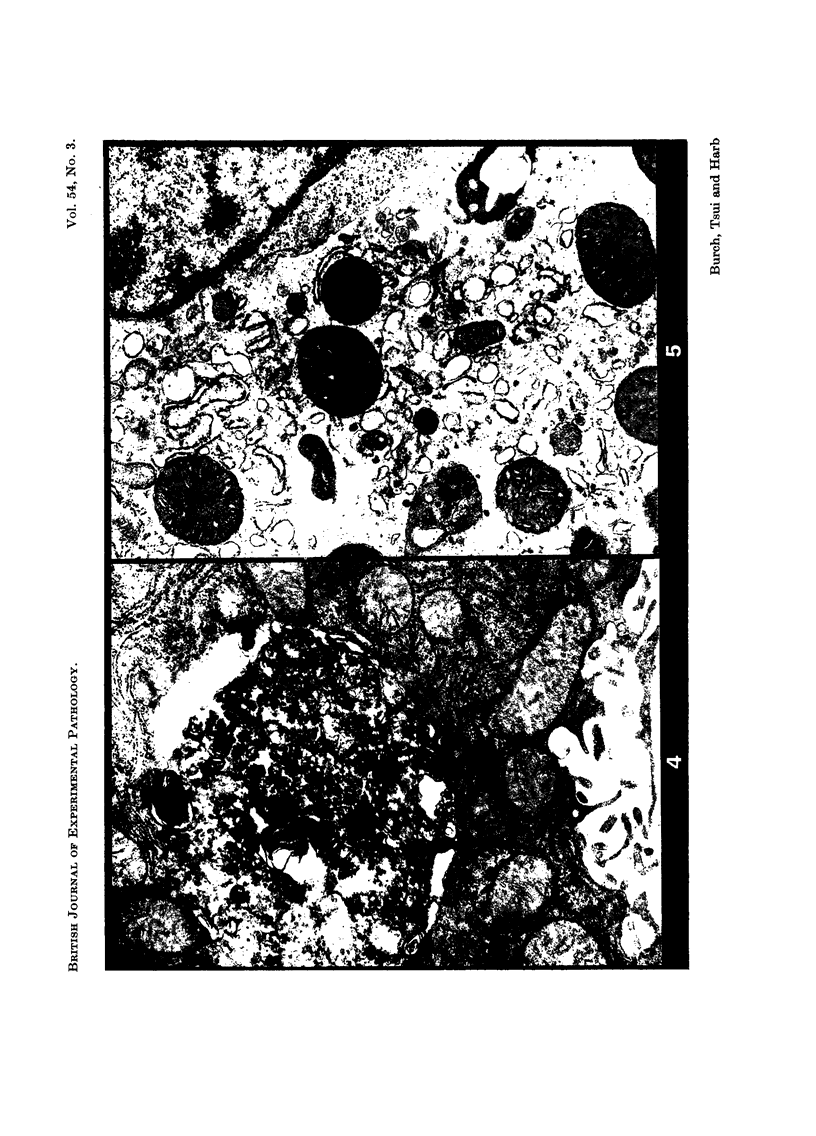

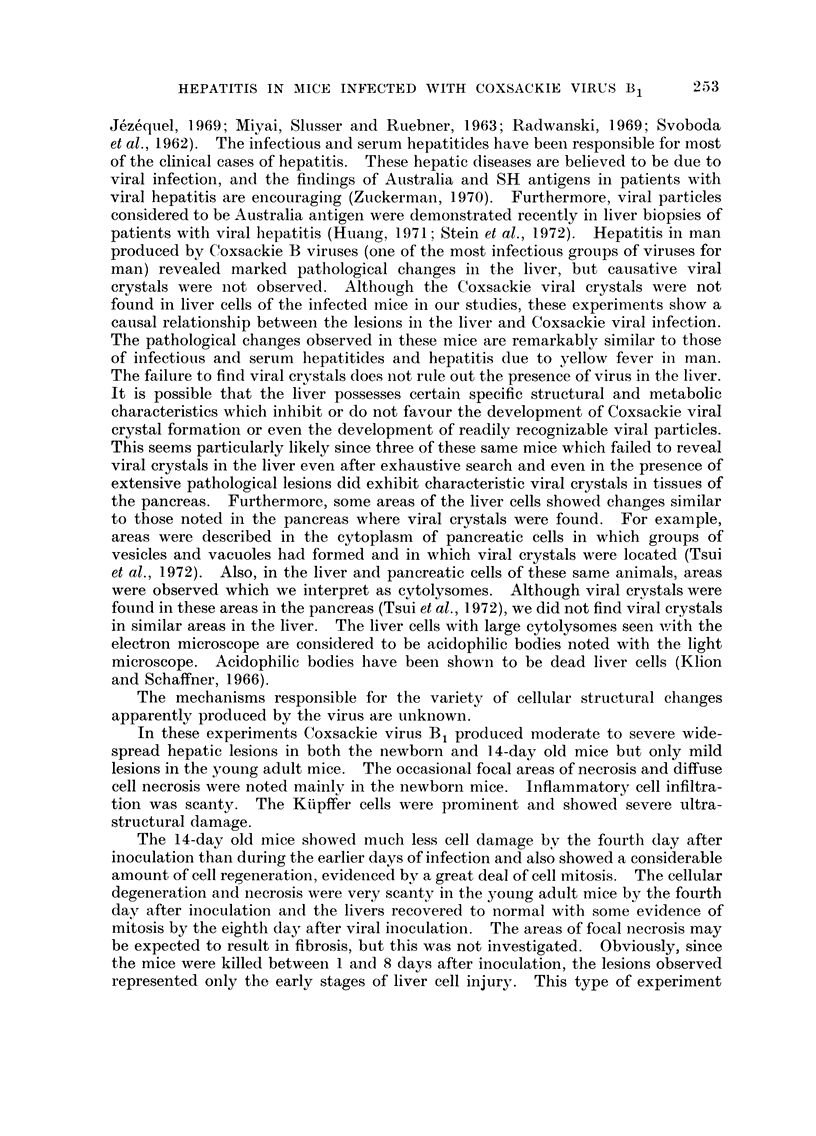
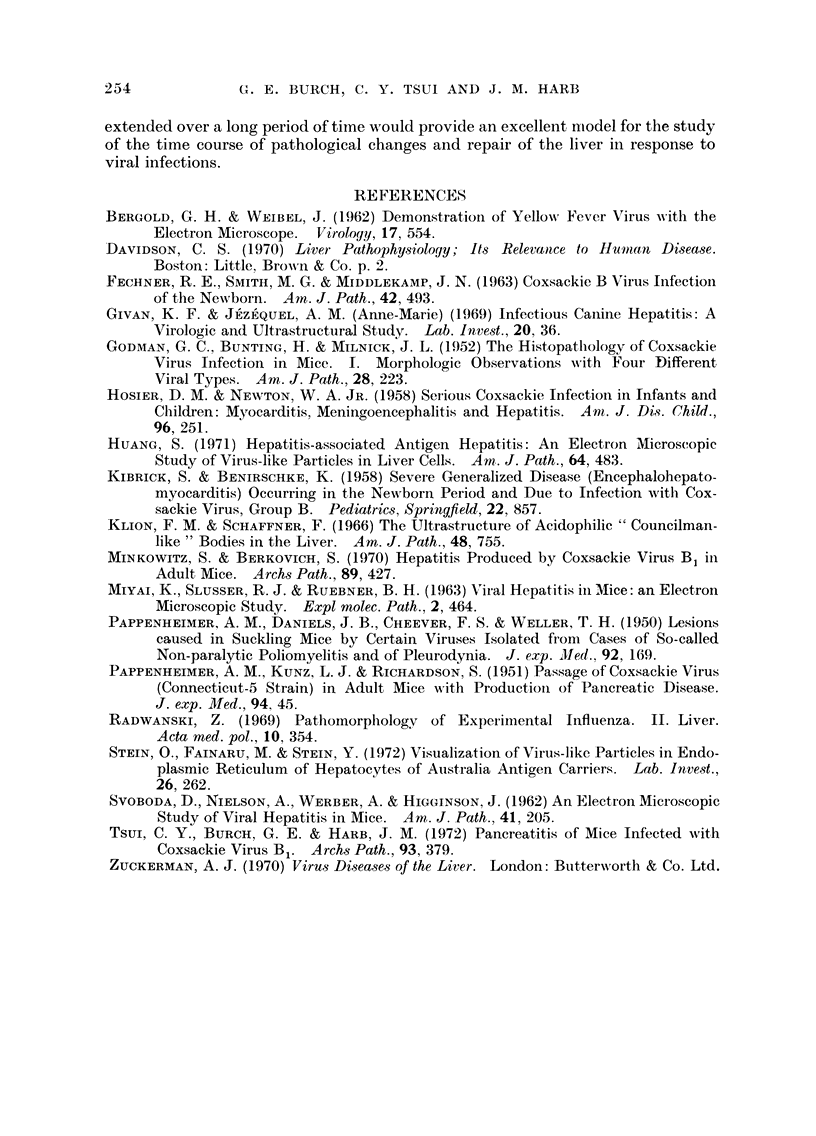
Images in this article
Selected References
These references are in PubMed. This may not be the complete list of references from this article.
- BERGOLD G. H., WEIBEL J. Demonstration of yellow fever virus with the electron microscope. Virology. 1962 Aug;17:554–562. doi: 10.1016/0042-6822(62)90155-1. [DOI] [PubMed] [Google Scholar]
- GODMAN G. C., BUNTING H., MELNICK J. L. The histopathology of Coxsackie virus infection in mice. I. Morphologic observations with four different viral types. Am J Pathol. 1952 Mar-Apr;28(2):223–257. [PMC free article] [PubMed] [Google Scholar]
- HOSIER D. M., NEWTON W. A., Jr Serious Coxsackie infection in infants and children; myocarditis, meningoencephalitis, and hepatitis. AMA J Dis Child. 1958 Sep;96(3):251–267. doi: 10.1001/archpedi.1958.02060060253001. [DOI] [PubMed] [Google Scholar]
- Huang S. Hepatitis-associated antigen hepatitis. An electron microscopic study of virus-like particles in liver cells. Am J Pathol. 1971 Sep;64(3):483–492. [PMC free article] [PubMed] [Google Scholar]
- KIBRICK S., BENIRSCHKE K. Severe generalized disease (encephalohepatomyocarditis) occurring in the newborn period and due to infection with Coxsackie virus, group B; evidence of intrauterine infection with this agent. Pediatrics. 1958 Nov;22(5):857–875. [PubMed] [Google Scholar]
- Klion F. M., Schaffner F. The ultrastructure of acidophilic "Councilman-like" bodies in the liver. Am J Pathol. 1966 May;48(5):755–767. [PMC free article] [PubMed] [Google Scholar]
- Minkowitz S., Berkovich S. Hepatitis produced by coxsackievirus B1 in adult mice. Arch Pathol. 1970 May;89(5):427–433. [PubMed] [Google Scholar]
- PAPPENHEIMER A. M., DANIELS J. B., CHEEVER F. S., WELLER T. H. Lesions caused in suckling mice by certain viruses isolated from cases of so called non-paralytic poliomyelitis and of pleurodynia. J Exp Med. 1950 Aug;92(2):169–190. doi: 10.1084/jem.92.2.169. [DOI] [PMC free article] [PubMed] [Google Scholar]
- PAPPENHEIMER A. M., KUNZ L. J., RICHARDSON S. Passage of Coxsackie virus (Connecticut-5 strain) in adult mice with production of pancreatic disease. J Exp Med. 1951 Jul 1;94(1):45–64. doi: 10.1084/jem.94.1.45. [DOI] [PMC free article] [PubMed] [Google Scholar]
- Radwański Z. Pathomorphology of experimental influenza. II. Liver. Acta Med Pol. 1969;10(4):354–362. [PubMed] [Google Scholar]
- SVOBODA D., NIELSON A., WERBER A., HIGGINSON J. An electron microscopic study of viral hepatitis in mice. Am J Pathol. 1962 Aug;41:205–224. [PMC free article] [PubMed] [Google Scholar]
- Stein O., Fainaru M., Stein Y. Visualization of virus-like particles in endoplasmic reticulum of hepatocytes of Australia antigen carriers. Lab Invest. 1972 Mar;26(3):262–269. [PubMed] [Google Scholar]
- Tsui C. Y., Burch G. E., Harb J. M. Pancreatitis in mice infected with coxsackievirus B1. Arch Pathol. 1972 May;93(5):379–389. [PubMed] [Google Scholar]



